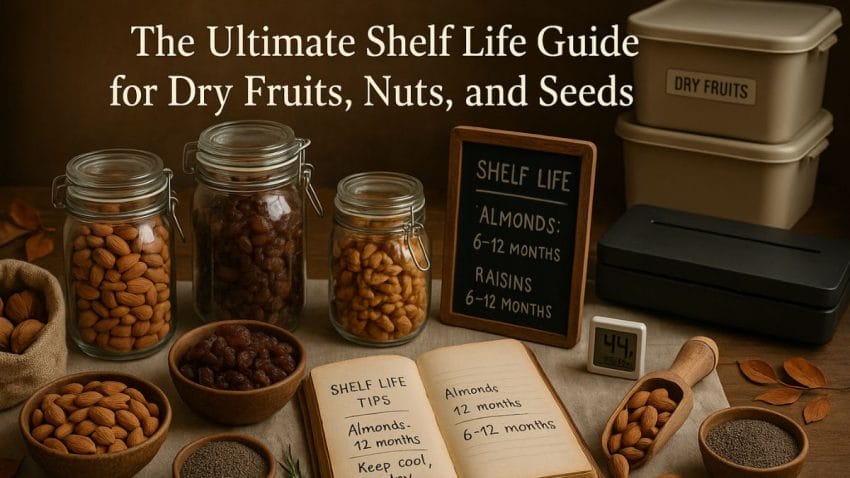Discover dates (Khajur) from root to table: a 7,000-year history, botany and ripening stages, Medjool vs Deglet Noor, sensory notes, nutrition facts, farming and processing, storage tips, and cultural significance. Clear, factual, and recipe-ready guidance for shoppers, cooks, and curious readers.
Author: Team DFD
Seeds on Paleo Diet: Paleo-Approved Seeds
Learn which seeds truly fit the Paleo diet. This guide ranks chia, flax, pumpkin, sunflower, sesame, and hemp seeds by nutrition, digestibility, and omega-3 value—plus soaking and roasting tips for optimal health.
Paleo Diet Nuts Guide: Which Nuts Are Approved & Why
Deep within archaeological sites spanning from Israel to South Africa, researchers have uncovered evidence of systematic nut consumption dating back 780,000 years. Stone tools specifically designed for cracking hard-shelled tree nuts reveal that our Paleolithic ancestors relied heavily on these nutrient-dense foods for survival. This archaeological record establishes the foundation for understanding why certain nuts…
What Is an Almond (Badam)? History, Varieties & Cultural Importance
Discover the complete story of the almond (Prunus dulcis) — from its ancient Middle Eastern origins and botanical identity to global varieties, sensory profiles, storage science, and cultural importance across cuisines.
Top 13 High-Protein Nuts & Seeds Ranked by Protein Content
For individuals embracing plant-based diets, optimizing athletic performance, or simply looking to increase their protein intake, identifying potent and convenient sources is a primary goal. Within the category of “dry fruits,” nuts and seeds stand out as veritable powerhouses of plant-based protein, offering a wealth of nutrition beyond just healthy fats. As explored in our…
Common Home Fruit Drying Issues Troubleshooting Guide
Embarking on the journey of home fruit drying is a rewarding experience, but it’s not without its learning curve. Even the most experienced food preservers have faced a tray of stubbornly sticky apricots, brittle banana chips, or fruit that has browned unattractively. These common issues can be frustrating, but they are almost always preventable with…
Sugars in Dry Fruits: Natural vs Added Sugars Explained
In the quest for healthier eating, sugar has become a primary focus of concern. This often leads to confusion when it comes to dry fruits: they are fruits, which are healthy, but they are also sweet. Are they a wholesome food or simply a “natural” candy? This guide provides a comprehensive explanation of the crucial…
Soaking Nuts & Seeds: Science-Based Guide to Antinutrient
The practice of soaking nuts and seeds before eating is a tradition rooted in ancient culinary wisdom, now popularized by modern wellness movements. Proponents claim it “activates” enzymes, neutralizes “antinutrients,” and unlocks a wealth of nutrition. But what does the science say? This guide provides a critical, evidence-based investigation into the impact of soaking dry…
The Glycemic Index and Glycemic Load of Dry Fruits: A Scientific Guide
For individuals managing blood sugar, and for nutrition professionals guiding them, understanding a food’s impact on glucose levels is paramount. Dry fruits and nuts, with their complex nutritional profiles, present a fascinating case study in glycemic response. This guide provides a detailed scientific explanation of the Glycemic Index (GI) and Glycemic Load (GL) of commonly…
The Ultimate Shelf Life Guide for Dry Fruits, Nuts, and Seeds
Comprehensive guide to dry fruit shelf life and storage. Learn how long nuts, seeds, and dried fruits last in pantry, fridge, and freezer, plus expert tips to prevent spoilage and waste.









